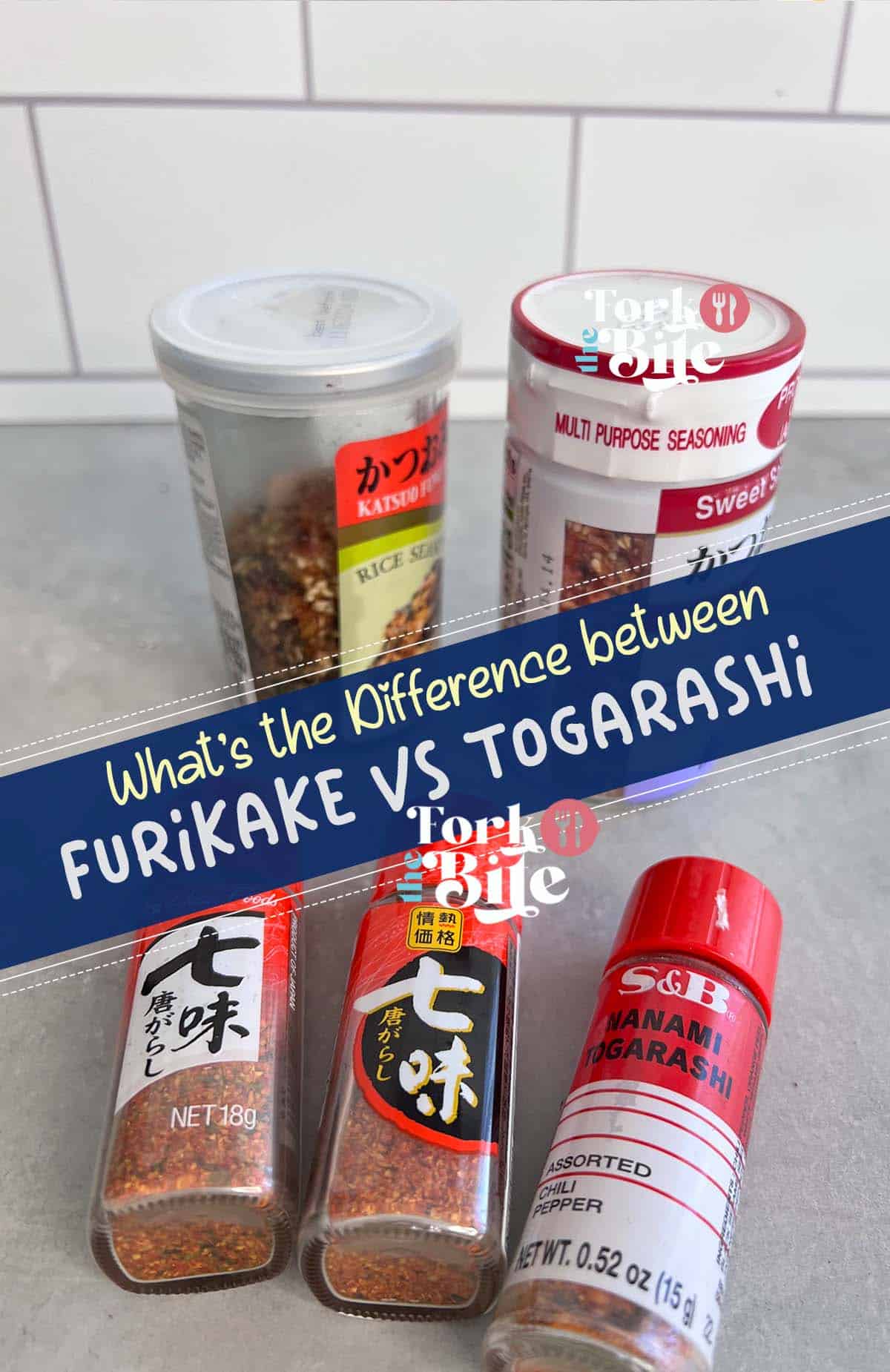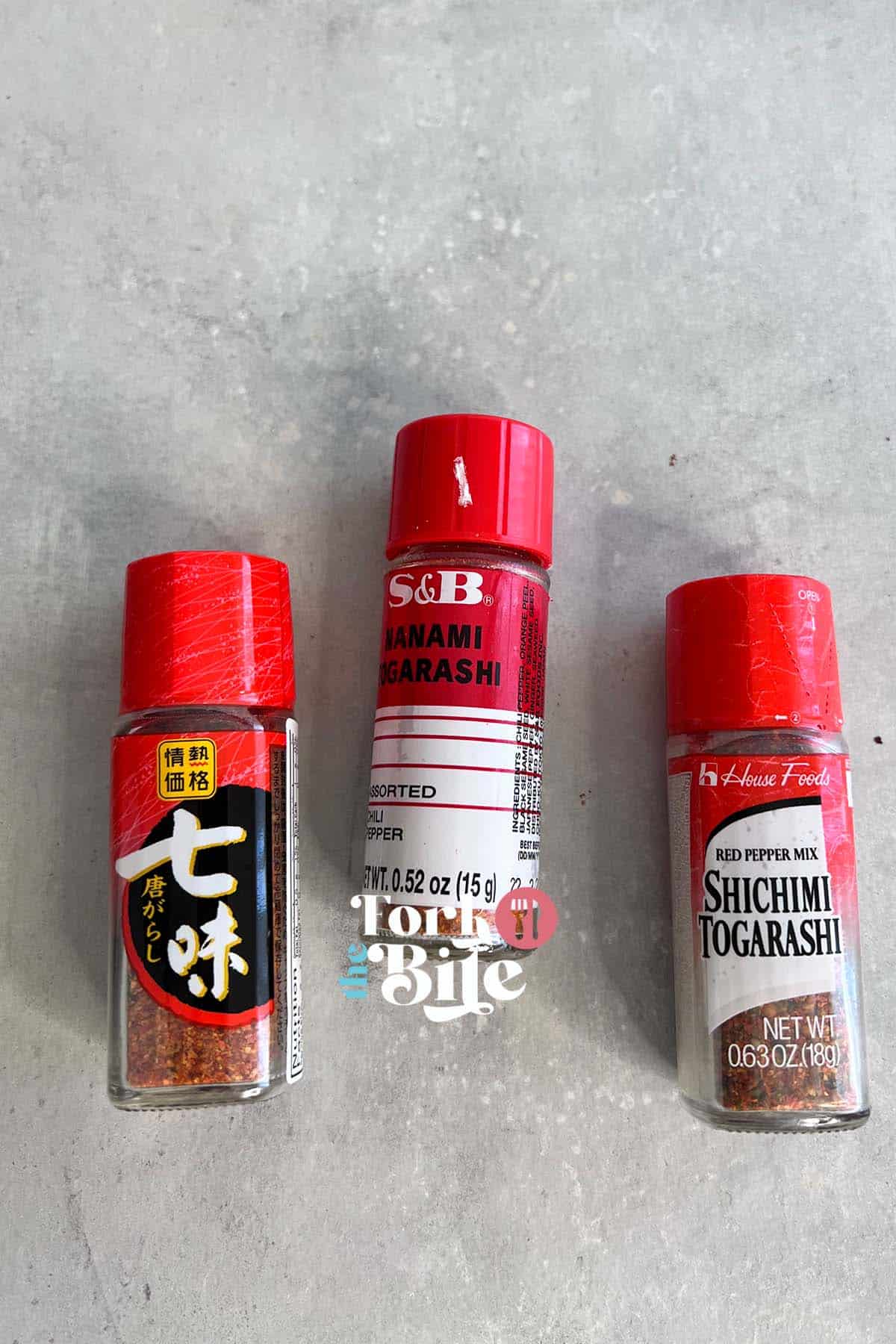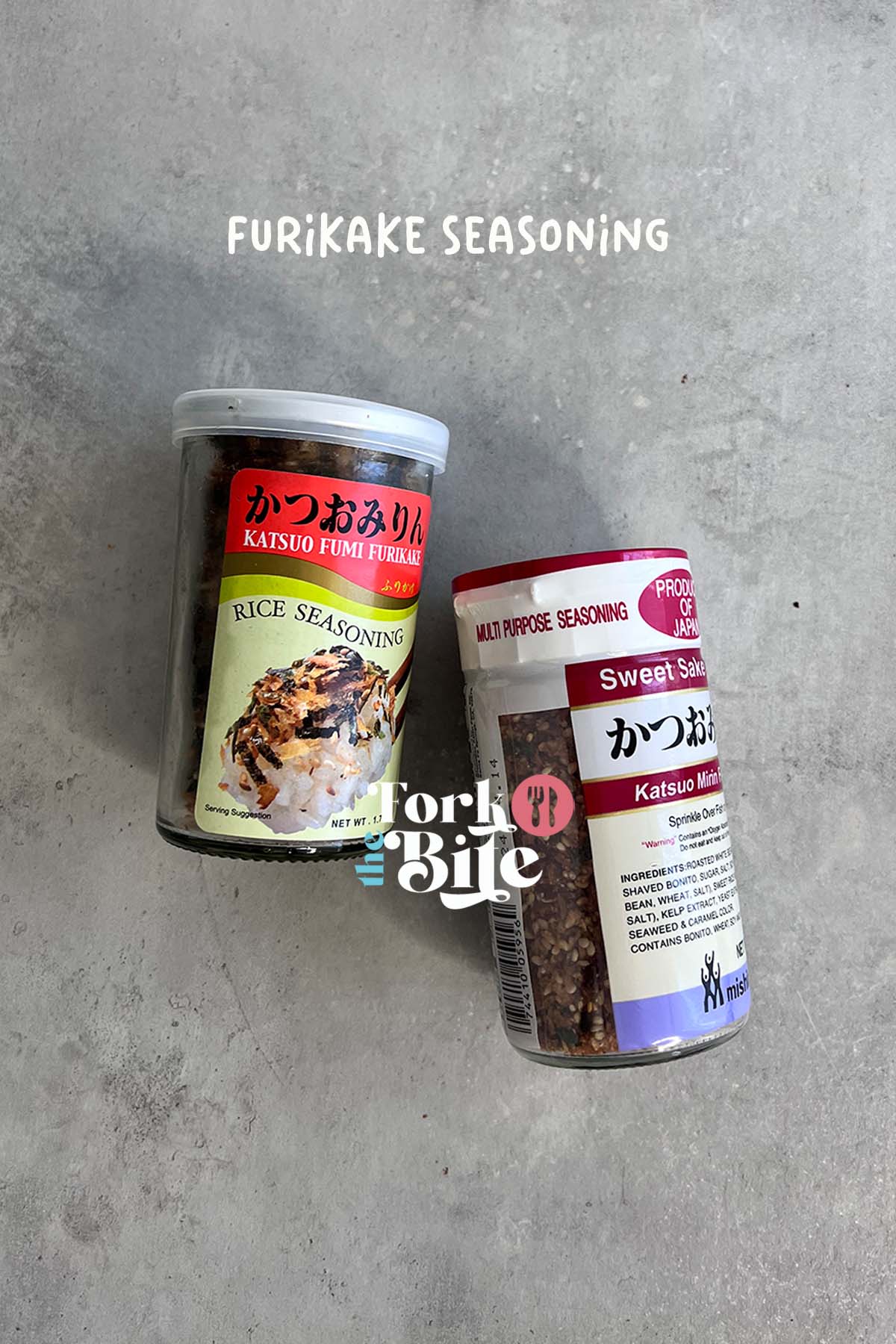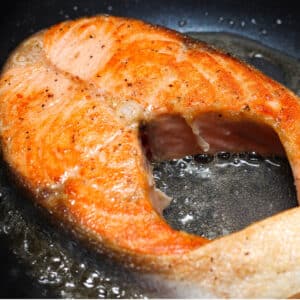When we dive into Japanese seasonings, Togarashi vs Furikake is two names that pop up quite frequently. They're like the salt and pepper of Japanese food - not in terms of taste, but rather their ubiquity and importance in the culinary scene. But what exactly sets them apart?
Togarashi and Furikake are both Japanese seasonings, but they have unique differences. Each has its signature taste and role in enhancing various dishes. Togarashi, also known as 'seven-spice,' is a chili-based blend providing heat, whereas Furikake is a versatile, flavorful topping typically sprinkled on rice.
Take aways:
- Distinct Flavor Profiles: Togarashi brings a fiery zest, while Furikake imparts a flavorful umami essence, offering diversity in your culinary creations.
- Ingredient Complexity: Togarashi consists of seven elements, each adding depth, while Furikake's components can vary, offering a range of flavors.
- Culinary Adaptability: Both Togarashi and Furikake can elevate many dishes, from traditional Japanese cuisine to innovative fusion foods.
Jump to:
A brief overview
Togarashi, or as we also know it, Shichimi Togarashi, is a spicy blend with a kick. It typically combines seven ingredients, which can vary but often include chili pepper, orange peel, black and white sesame seeds, Japanese pepper (Sansho), ginger, and seaweed. This blend brings a hot, citrusy zing to your dishes, perfect for adding warmth on a cold day or spicing a plate of yakitori. It's like a heartwarming friend who loves to surprise you.
On the other hand, Furikake is more of a quiet, comforting friend, bringing out the best in others without stealing the show. It's a dry seasoning that's traditionally sprinkled over cooked rice. Its usual lineup includes sesame seeds, chopped seaweed, and dried fish, and it can also include other flavor powerhouses like dried egg, wasabi, or salmon. The taste is a satisfying mix of salty, savory, and umami - a true celebration of flavors.
Understanding the difference between Togarashi vs Furikake
While both Togarashi and Furikake can elevate a dish, using them in the right context is essential. For example, if you're cooking up a hot bowl of ramen, a sprinkle of Togarashi on top can add that finishing touch, bringing a complex, spicy note to your dish. But if you have a bowl of plain, steamed rice, that's where Furikake can work its magic, transforming simple rice into a flavorful, aromatic treat.
In "Japanese Cooking: A Simple Art" by Shizuo Tsuji, there's a great example of how these two spices are utilized in different contexts. Tsuji sprinkles Togarashi over soba noodles for that extra kick. At the same time, Furikake is used in a rice dish called Chirashi-zushi, which perfectly complements the sushi rice and various toppings.

Togarashi and Furikake - A comparison table
Cooking is not just about following recipes - it's about understanding ingredients and how to use them. So next time you're in the kitchen, ready to create a Japanese feast, remember: Togarashi for that spicy punch and Furikake for a gentle, flavor-boosting sprinkle.
| Comparison Aspect | Togarashi | Furikake |
|---|---|---|
| Origin | Derived from Chinese influences, Togarashi is a chili-based spice blend. | Furikake was invented in Japan in the early 20th century as a calcium supplement. |
| Translation | Togarashi translates to "chili pepper" in English. | Furikake translates to "to sprinkle over" in English. |
| Composition | Consists of 7 ingredients: Chili pepper, orange peel, sesame seeds, Japanese pepper, ginger, and seaweed. | Ingredients can vary, but typically include sesame seeds, chopped seaweed, salt, sugar, and dried fish. |
| Flavor Profile | It has a hot and slightly citrusy flavor. | It has a savory, salty, and umami-rich flavor. |
| Use in Cuisine | Often used as a finishing spice for dishes like noodles and soups. | Primarily used as a topping for rice, but also found in sushi and onigiri. |
| Varieties | Shichimi Togarashi and Ichimi Togarashi are two popular types. | Popular varieties include Shiso, Wasabi, Nori, Salmon, and Wakame Furikake. |
| Variations | Comes in different heat levels, depending on the type of chilies used. | Comes in a multitude of flavors and combinations, including versions with egg, salmon, wasabi, and more. |
| Taste | Spicy with a hint of citrus. | Salty and umami, but can also be sweet or spicy, depending on the version. |
| Substitute | A mix of red pepper flakes and sesame seeds can serve as a substitute. | A mix of sesame seeds, seaweed, and salt can be used as a substitute. |
| Storage | Store in a cool, dark place, sealed tightly. | Store in a cool, dry place, away from direct sunlight. Seal tightly after use. |
| Health Benefits | Contains capsaicin, which has anti-inflammatory properties. | It is rich in calcium and omega-3 fatty acids from its seaweed and sesame seeds. |
| Nutrition | High in antioxidants due to chili peppers and low in calories. | High in calcium and omega-3 fatty acids, but also can be high in sodium. |
| Where to Buy | Available in Asian grocery stores, spice stores, and online retailers. | Can be found in Asian supermarkets, in the international aisle of some grocery stores, and online. |
Exploring Togarashi and Furikake flavors
Togarashi and Furikake, while both cornerstone seasonings in Japanese cuisine, offer completely different flavor experiences. With its chili pepper base, Togarashi leans towards the spicy and citrusy, thanks to the addition of orange peel and Sansho. It's a heat-bringer, a flavor enhancer that adds a kick to any dish it graces.
Furikake, on the other hand, is all about umami. The seaweed and dried fish give it a deep, oceanic flavor, while the sesame seeds add a toasty, nutty note. Depending on the variation, you might also get a hint of sweetness (from a dried egg) or a burst of freshness (from shiso leaves).
How the ingredients contribute to their respective tastes
The unique blend of ingredients in each seasoning is what shapes their taste. In Togarashi, the chili peppers provide heat, balanced by the slight sweetness of the orange peel and the unique, slightly numbing bite of the Sansho pepper.
In Furikake, the seaweed and dried fish bring an umami depth, complemented by the earthy sesame seeds and the subtle flavor accents from additional ingredients like dried egg, wasabi peas, or shiso leaves.
Togarashi and Furikake in the kitchen
A Comparison of their roles and uses in cooking
While both Togarashi and Furikake enhance the flavors of dishes, they play different roles in the kitchen. Togarashi is a finishing spice you sprinkle on just before serving to add heat and a touch of complexity. It's often used in noodle dishes, grilled meats, and soups.
Furikake, however, is typically used as a rice seasoning. It's added to rice to give it more flavor and texture. Beyond rice, it can be used in various ways - mixed into batters, sprinkled over salads, or used as a topping for grilled fish.
Unique and shared dishes that incorporate each seasoning
There are some dishes where Togarashi and Furikake can be used interchangeably, like yakitori or tempura, where both can add a flavorful sprinkle. However, each also has its unique applications. For example, Togarashi is a classic addition to a bowl of ramen, while Furikake is the star in onigiri or ochazuke.
Health profiles: Togarashi vs Furikake
Nutritional values
Both Togarashi and Furikake offer nutritional benefits. Thanks to its chili peppers, Togarashi is a good source of capsaicin, known for its anti-inflammatory properties. With its seaweed and sesame seeds, Furikake offers good dietary fiber, calcium, and iodine.
Discussing the health benefits
While both seasonings bring health benefits, they should be used in moderation due to their high sodium content. Togarashi's capsaicin might also be a concern for those with sensitive stomachs.
On the other hand, Furikake's fish and seaweed ingredients make it a good choice for those looking to add more omega-3 fatty acids and iodine to their diet. As always, the key is balance and moderation in usage.
Exploration of Togarashi

The cultural significance of Togarashi
Togarashi, or as we know it better, Shichimi Togarashi, originated back in the 17th century in Edo, present-day Tokyo. The Yagenbori family began producing this spicy blend and continues to do so even today, passing down the recipe through generations.
Its Cultural relevance in Japanese cuisine
Togarashi is a staple in Japanese cuisine, just like soy sauce or miso. It's as common in Japanese households as a pepper shaker would be in the West. The versatile blend adds a spicy, slightly citrusy kick to various dishes.
Related: Creamy Togarashi Sauce
Understanding the composition of Togarashi
Breakdown of the seven ingredients
The classic recipe includes seven ingredients: chili pepper, black and white sesame seeds, orange peel, Sansho (Japanese pepper), ginger, and seaweed. Each ingredient brings something unique to the table, creating a blend more than the sum of its parts.
How each ingredient contributes to its unique flavor profile
The chili pepper provides heat, while the orange peel adds a hint of citrusy brightness. Sesame seeds bring a toasty, nutty flavor, while the Japanese pepper adds a pleasant, tongue-tingling bite. Ginger provides a bit of warmth, and the seaweed rounds out the blend with its salty, oceanic flavor.
Togarashi in the culinary world
Dishes that utilize Togarashi
Togarashi shines in dishes like udon, soba, and ramen, adding a spicy note that contrasts beautifully with the rich, savory broths. It's also a great addition to grilled meats and tempura.
Fusion cuisine using Togarashi
In the modern culinary scene, chefs find new ways to use Togarashi. For instance, it can add a twist to a classic Caesar salad or give a spicy kick to popcorn or French fries. Fusion dishes like Togarashi-spiced tacos or Togarashi-crusted tuna are also gaining popularity.
The Health implications of Togarashi
A look into the nutritional value of Togarashi
Togarashi is low in calories but high in flavor. Thanks to its diverse ingredients, it's also a good source of dietary fiber and offers some vitamins and minerals.
Potential health benefits and considerations
The chili peppers in Togarashi contain capsaicin, known for its anti-inflammatory properties. However, those with sensitive stomachs might want to use it sparingly due to its spiciness. Enjoy the heat and the health benefits Togarashi brings to your table! As with any seasoning, it's all about balance and moderation.
A comprehensive dive into Furikake

Furikake: More than just a seasoning
Furikake was created in the early 20th century by a pharmacist named Suekichi Yoshimaru as a calcium supplement. He ground up fish bones, mixed them with sesame seeds and seaweed, and encouraged people to sprinkle it over rice. Today, it's a beloved condiment that's as common in Japanese kitchens as ketchup is in American ones.
Related: How to Make Furikake
Significance in Japanese households and cuisine
Furikake is much more than just a seasoning. It's a way to transform a bowl of plain rice into something extraordinary. Whether a quick breakfast or a dinner side dish, Furikake brings a burst of flavor to the simplest of meals, making it an indispensable part of the Japanese diet.
Related: Furikake Salmon Recipe
Unpacking the ingredients of Furikake
The core ingredients in Furikake are usually sesame seeds, chopped seaweed, dried fish, and MSG. However, variations abound, and Furikake can include anything from wasabi peas to dried egg to shiso leaves. Each component adds a different flavor note, creating a symphony of taste in every pinch.
Exploring the diverse variations of Furikake
There are as many types of Furikake as there are preferences. You've got your salmon Furikake, your wasabi Furikake, your shiso Furikake – the list goes on. Each one has its own unique flavor profile, but they all share one thing in common: they make your rice taste amazing.
Furikake's culinary journey
Traditional uses of Furikake in Japanese dishes
While Furikake is primarily used as a rice seasoning, its uses don't stop there. It's also sprinkled over onigiri (rice balls), mixed into ochazuke (a dish of rice with green tea), or even added to the batter of okonomiyaki (savory pancakes).
Creative applications of Furikake in contemporary cuisine
In the fusion cuisine world, Furikake has also found a place. Chefs are using it for seasoning everything from popcorn to fries, adding an umami punch that's both unexpected and delightful.
Nutritional aspects of Furikake
Furikake is low in calories but high in flavor. Depending on the ingredients used, it can also be a good source of calcium (from the sesame seeds) and iodine (from the seaweed).
Health Benefits and Potential Dietary Considerations
While Furikake brings a lot of flavors, it's also high in sodium, so it's best used in moderation. But don't let that stop you from enjoying it – a little sprinkle goes a long way, and its burst of flavor is well worth it!
Togarashi vs Furikake in home cooking
Incorporating Togarashi in everyday meals
Togarashi can transform the simplest of meals into a gastronomic delight. For example, let's jazz up a classic vegetable stir-fry. Start by heating some oil in your pan and sautéing your favorite mix of veggies. Once they're cooked to your liking, give them a good sprinkle of Togarashi - just enough to give a hint of heat. It's as simple as that!
You can also add Togarashi to your marinades. For instance, if you're grilling chicken, mix some Togarashi with soy sauce, mirin, and a touch of brown sugar. Let your chicken soak in this mixture for a few hours, and you'll be amazed by the depth of flavor Togarashi can bring.
Adjust Togarashi quantities for the desired flavor
Remember, Togarashi is pretty spicy, so start small. You can always add more, but you can't take it away once it's in there. Start with a small pinch, then taste and adjust as needed. If you're cooking for people with varying heat preferences, you might want to serve the Togarashi on the side and let everyone customize their own dish.
Mastering the art of Furikake usage
Using Furikake in various dishes
Furikake is traditionally used to season rice but can do so much more. Take your scrambled eggs to the next level by mixing in a generous sprinkle of Furikake before cooking. Or give your popcorn a Japanese twist by tossing it with some melted butter and Furikake.
Another great way to use Furikake is in your breading for fried foods. Mix some Furikake into your breadcrumbs if you make breaded chicken or fish. It'll add an unexpected burst of flavor that'll leave everyone asking for your secret ingredient.
How to get creative with Furikake in the kitchen
Don't be afraid to get creative with Furikake! It's a versatile seasoning that can uniquely flavor various dishes. How about mixing it into your pizza dough for a seaweed-infused crust? Or sprinkle it over roasted vegetables for an umami boost? The possibilities are endless. I always encourage experimenting with different uses for Furikake - you might stumble upon your new favorite dish.
Frequently Asked Questions
Togarashi, also known as Shichimi Togarashi, is a complex blend of seven ingredients, hence the name Shichimi, which means "seven flavors" in Japanese. These ingredients typically include red chili pepper, Japanese pepper (Sansho), roasted orange peel, black sesame seed, white sesame seed, hemp seed, and ground ginger.
On the other hand, Furikake is a dry seasoning mix intended to be sprinkled on top of cooked rice. The ingredients vary widely, but most versions contain dried fish (typically bonito), sesame seeds, chopped seaweed, sugar, and salt. Some versions may include other elements like dried egg, shiso, wasabi, or other vegetables for added flavor.
Togarashi is quite versatile, adding a kick of heat and depth of flavor to a range of dishes. You can sprinkle it over your favorite noodle dish, mix it into a marinade, or even season roasted vegetables or popcorn.
Furikake is traditionally sprinkled over rice, but its uses have expanded beyond that. You can use it to season eggs, mix it into a salad dressing, or even sprinkle it over popcorn or fries for a unique twist.
Both Togarashi and Furikake bring some health benefits, thanks to their ingredients. Togarashi, with its chili peppers, can potentially aid in digestion and help boost your metabolism. Plus, it's low in calories, making it a good choice for adding flavor without adding extra calories.
On the other hand, Furikake can be a good source of calcium and other minerals, thanks to the dried fish and seaweed. However, remember that it can be high in sodium, so it's best to use it in moderation.
You can find Togarashi and Furikake at most Asian markets or specialty food stores. If you can't find them locally, they're readily available online from retailers like Amazon or specialty food websites. Many larger supermarkets also carry these seasonings in their international or Asian food aisle.
A blend of spices and seeds typically make up Togarashi, making it generally suitable for vegetarians and vegans. On the other hand, Furikake often has dried fish, so it's not usually suitable for vegetarians and vegans. However, some Furikake varieties don't contain animal products. If you follow a vegetarian or vegan diet, always read the label.




